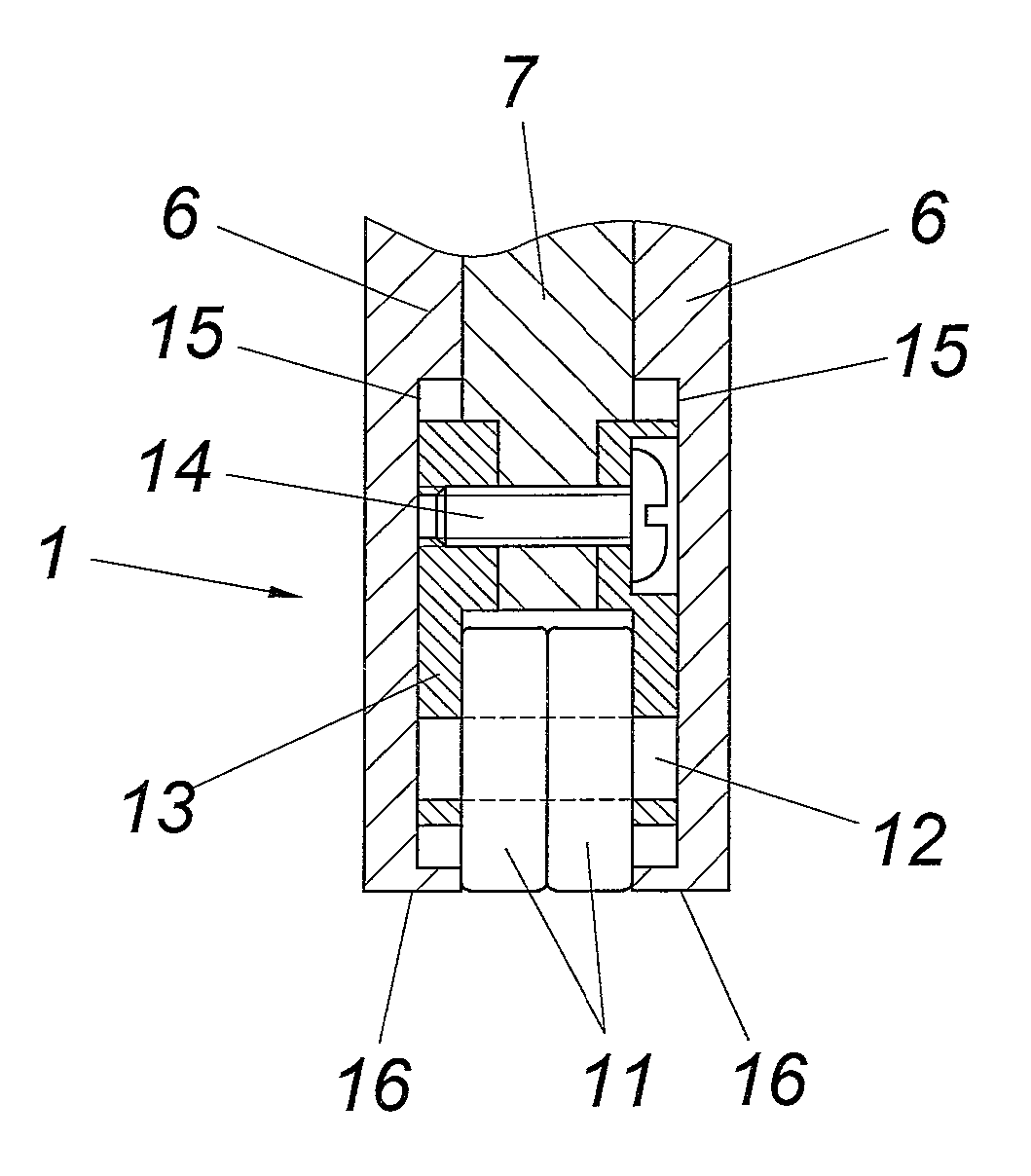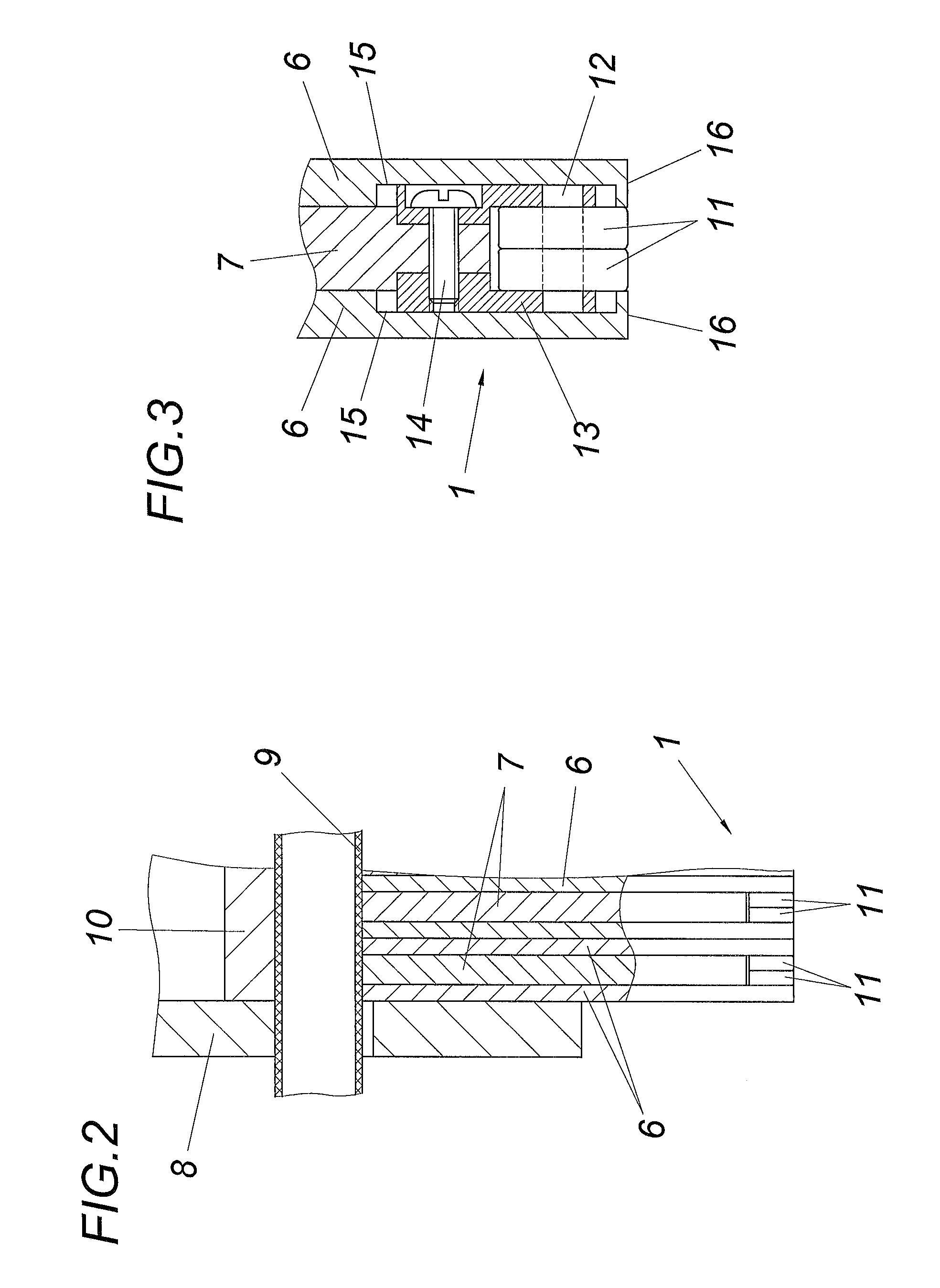Apparatus for laying fiber tapes
a technology of fiber tapes and apparatuses, applied in the direction of adhesives, chemistry apparatus and processes, domestic applications, etc., can solve the problem that the width of the pressure plate provided with the roller can remain limited to the width of the roller
- Summary
- Abstract
- Description
- Claims
- Application Information
AI Technical Summary
Benefits of technology
Problems solved by technology
Method used
Image
Examples
Embodiment Construction
[0020]In accordance with the embodiment according to FIGS. 1 to 3, the apparatus comprises a laying head with a deflection guide 1 for the fiber tapes 2 having an adhesive tape 4 carrying a fiber layer 3. Said fiber tapes 2 are drawn off a supply roll and pressed by means of the deflection guide 1 against the already laid fiber layers 5 of a fiber structure to be formed, wherein the adhesive tape 4 is drawn off the fiber layer 3 of the fiber tape 2, which occurs at a comparatively small deflection radius. The deflection guide 1 is composed of a plurality of pressure plates 6 and 7 which are arranged next to one of other perpendicularly to the deflection axis and which are displaceably guided in a frame 8 in the pressing direction and are pressurized by means of a membrane 9 together with a pressure medium. In order to achieve simple constructional conditions, the membrane 9 is formed in the embodiment by a pressure hose which rests as an abutment on the side of a frame wall 10 which...
PUM
| Property | Measurement | Unit |
|---|---|---|
| deflection radius | aaaaa | aaaaa |
| flexibility | aaaaa | aaaaa |
| friction | aaaaa | aaaaa |
Abstract
Description
Claims
Application Information
 Login to View More
Login to View More - R&D
- Intellectual Property
- Life Sciences
- Materials
- Tech Scout
- Unparalleled Data Quality
- Higher Quality Content
- 60% Fewer Hallucinations
Browse by: Latest US Patents, China's latest patents, Technical Efficacy Thesaurus, Application Domain, Technology Topic, Popular Technical Reports.
© 2025 PatSnap. All rights reserved.Legal|Privacy policy|Modern Slavery Act Transparency Statement|Sitemap|About US| Contact US: help@patsnap.com



